COMING SOON!
The Outlaw Urbanist
Professional Development and Training Courses
The Outlaw Urbanist will soon be launching an online series of professional development, training and continuing education courses about urbanism and the built environment for professionals, students, and other interested parties.
The courses are specifically tailored for architects, urban designers and planners requiring continuing education credits with the American Institute of Certified Planners (AICP), American Planning Association (APA), American Institute of Architects (AIA), and the Congress for New Urbanism (CNU-A). However, many courses will be accessible to anyone who is interested in the architecture, design, planning, real estate development, ecology, geography, sociology, and history of cities. The courses will be available for a small, competitive fee ($9.99 for one hour courses, $12.99 for courses for one-and-half-hour or longer) payable by debit/credit card through PayPal.
In keeping with the manifesto of The Outlaw Urbanist, our courses are firmly anchored in the ‘first principles’ of physical form and design. From this foundation, the courses will make the link to a variety of functional, social, and economic factors that are relevant for anyone interested in the built environment and urbanism. As such, students and those with specialist degrees and backgrounds in architecture, planning, and other fields may encounter unfamiliar – yet essential – principles and concepts about the art and science of buildings and settlements.
A sample of our initial course offerings include:
The Generic City and its Origins
This course covers the inherent, often unspoken constraints placed on the physical form and design of built environments by human nature and our basic needs for shelter, water, movement, food and specialized urban functions such as barter and defense in the founding and locating of cities (1.0 hour course).
The City’s Essential DNA and its Pattern
This course covers the most essential aspects of physical form at work in the design of all cities around the world from older, highly-localized urban grids in the Middle East/Africa to deformed grids in Europe to regular grids in the United States/Americas. The purpose is to provide an understanding of the basic typologies and geometries that can be found underlying all settlements, to one degree or another (1.0 hour course).
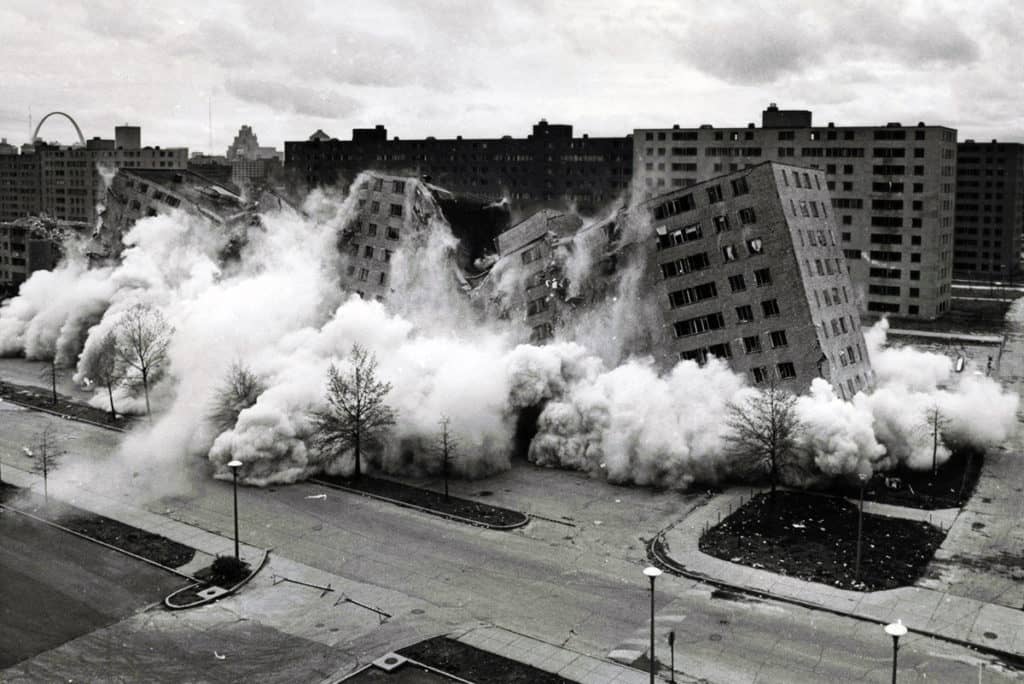
Unmasking Pruitt-Igoe: A Failure of Modernism
This course examines how (seemingly minor) design flaws in the architecture and planning of the Pruitt-Igoe Housing Project in St. Louis, Missouri established the preconditions – in combination with Federal, State, and local policy failures and institutional racism – for its rapid decline as a community. This eventually led to the demolition of Pruitt-Igoe only twenty years after it was heralded as a masterpiece of Modernist architecture and a planning model for urban housing in the 20th century (1.0 hour course).
The Hidden Corruptions of American Regular Grids: why space syntax doesn’t work in the United States when it looks like it should
This is a specialist course of those interested in space syntax (e.g. configurational modeling of urban networks based on lines of sights) and its lack of application in the United States. Undue emphasis on the economics of profit in American real estate development and planning in combination with the failure of space syntax to monetize its methodology creates a barrier for widespread implementation in the United States despite its track record of widespread success in many other parts of the world (1.5 hour course).
Watch a 30 second video preview below:
 Each course includes a prerecorded slide presentation with narration by The Outlaw Urbanist himself, Dr. Mark David Major, AICP, CNU-A. A brief course synopsis and biography is also provided for self-reporting purposes to your professional organization, employer, and/or academic institution. Slide handouts PDFs can be downloaded for each course. For now, we are asking participants to take advantage of opportunities to self-report continuing education credits. As we develop courses and the functionality of our online learning management system, we hope to eventually provide pre-approved credit opportunities for users, especially AICP planners. In the future, we also intend to supplement courses with written narratives of the presentation with additional opportunities for learning about the topic, e.g. bibliography, videos, exhibits, etc.
Each course includes a prerecorded slide presentation with narration by The Outlaw Urbanist himself, Dr. Mark David Major, AICP, CNU-A. A brief course synopsis and biography is also provided for self-reporting purposes to your professional organization, employer, and/or academic institution. Slide handouts PDFs can be downloaded for each course. For now, we are asking participants to take advantage of opportunities to self-report continuing education credits. As we develop courses and the functionality of our online learning management system, we hope to eventually provide pre-approved credit opportunities for users, especially AICP planners. In the future, we also intend to supplement courses with written narratives of the presentation with additional opportunities for learning about the topic, e.g. bibliography, videos, exhibits, etc.
We hope you decide to take advantage of The Outlaw Urbanist professional development, training, and continuing courses! If you have any questions or would like to suggest a topic to be covered in a future course, email courses@outlaw-urbanist-com.



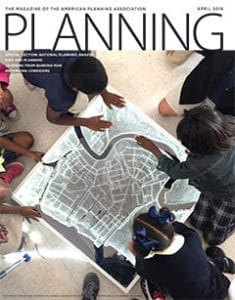 Planning Naked | April 2016
Planning Naked | April 2016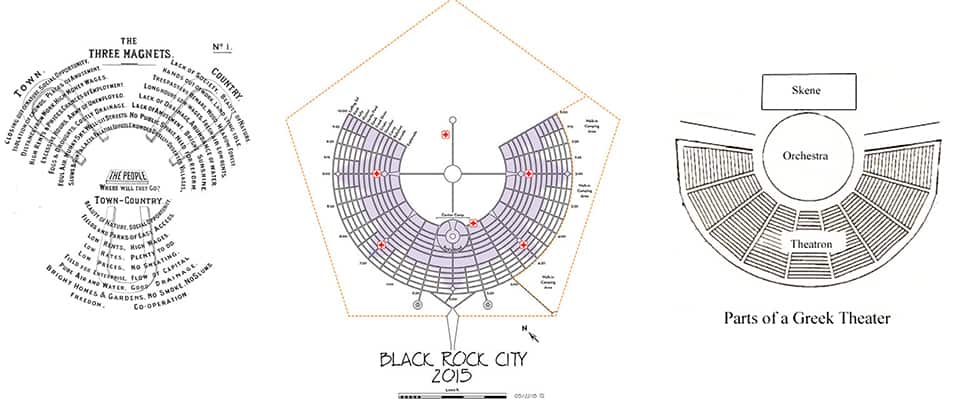
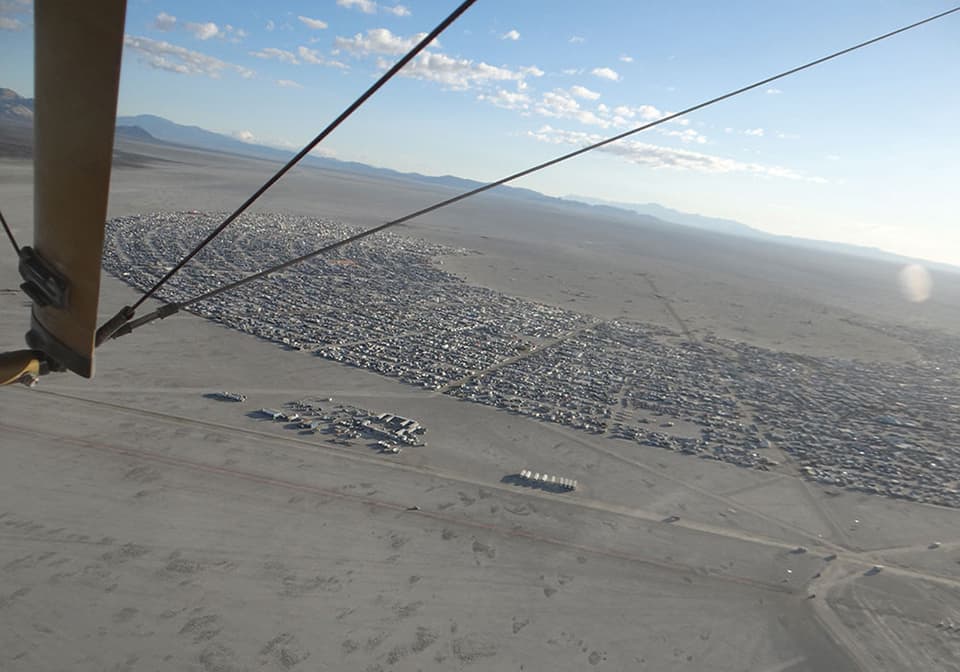
 7. “Flipping the Strip” by Randall Arendt for the Planning Practice section (pp. 32-35) is, by far, the most important article in this month’s issue. Naturally, it is an editorial/layout nightmare as the editors of Planning Magazine almost seem to be going out of their way to undercut the content, which transforms a relatively straightforward, clear, and concise argument into a confusing presentation for the readers to follow. Mr. Arendt should be upset about how his content was butchered by the editors.
7. “Flipping the Strip” by Randall Arendt for the Planning Practice section (pp. 32-35) is, by far, the most important article in this month’s issue. Naturally, it is an editorial/layout nightmare as the editors of Planning Magazine almost seem to be going out of their way to undercut the content, which transforms a relatively straightforward, clear, and concise argument into a confusing presentation for the readers to follow. Mr. Arendt should be upset about how his content was butchered by the editors.
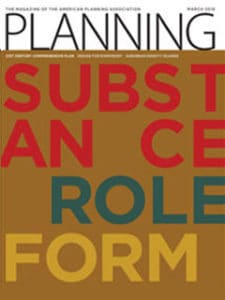 Planning Naked | March 2016
Planning Naked | March 2016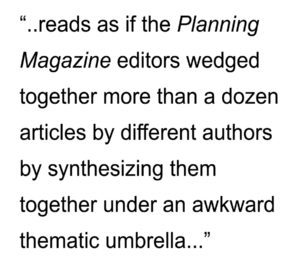 That’s not to say there aren’t good, interesting items in here (there are) but it’s a chore to sort through the mess and the constant “take (insert ‘community name/plan’ here)” asides are irritating in the extreme. It’s like someone composed a checklist, which can be re-constructed based on these paragraph ‘take this example’ asides. Let me try to help the readers: pp. 14-19 is ‘buzzword’ fluff that reads like a committee of marketing agencies wrote it (ignore it unless you find yourself in need of action verbs); pp. 20-24 (to the first 2 paragraphs) is outstanding because it demonstrates the re-emergence of design (e.g. form-based codes, etc.) as the real driver of new approaches to comprehensive plans and, in typical APA fashion, the awkward structure is designed to subvert the real story in order to re-assert (or, perhaps, soften the blow to) traditional planning approaches in the post-war period; the rest of the content (pp. 24-31) is mostly more planning fluff and buzzwords except for isolated excerpts here and there about PlanLafayette.
That’s not to say there aren’t good, interesting items in here (there are) but it’s a chore to sort through the mess and the constant “take (insert ‘community name/plan’ here)” asides are irritating in the extreme. It’s like someone composed a checklist, which can be re-constructed based on these paragraph ‘take this example’ asides. Let me try to help the readers: pp. 14-19 is ‘buzzword’ fluff that reads like a committee of marketing agencies wrote it (ignore it unless you find yourself in need of action verbs); pp. 20-24 (to the first 2 paragraphs) is outstanding because it demonstrates the re-emergence of design (e.g. form-based codes, etc.) as the real driver of new approaches to comprehensive plans and, in typical APA fashion, the awkward structure is designed to subvert the real story in order to re-assert (or, perhaps, soften the blow to) traditional planning approaches in the post-war period; the rest of the content (pp. 24-31) is mostly more planning fluff and buzzwords except for isolated excerpts here and there about PlanLafayette.